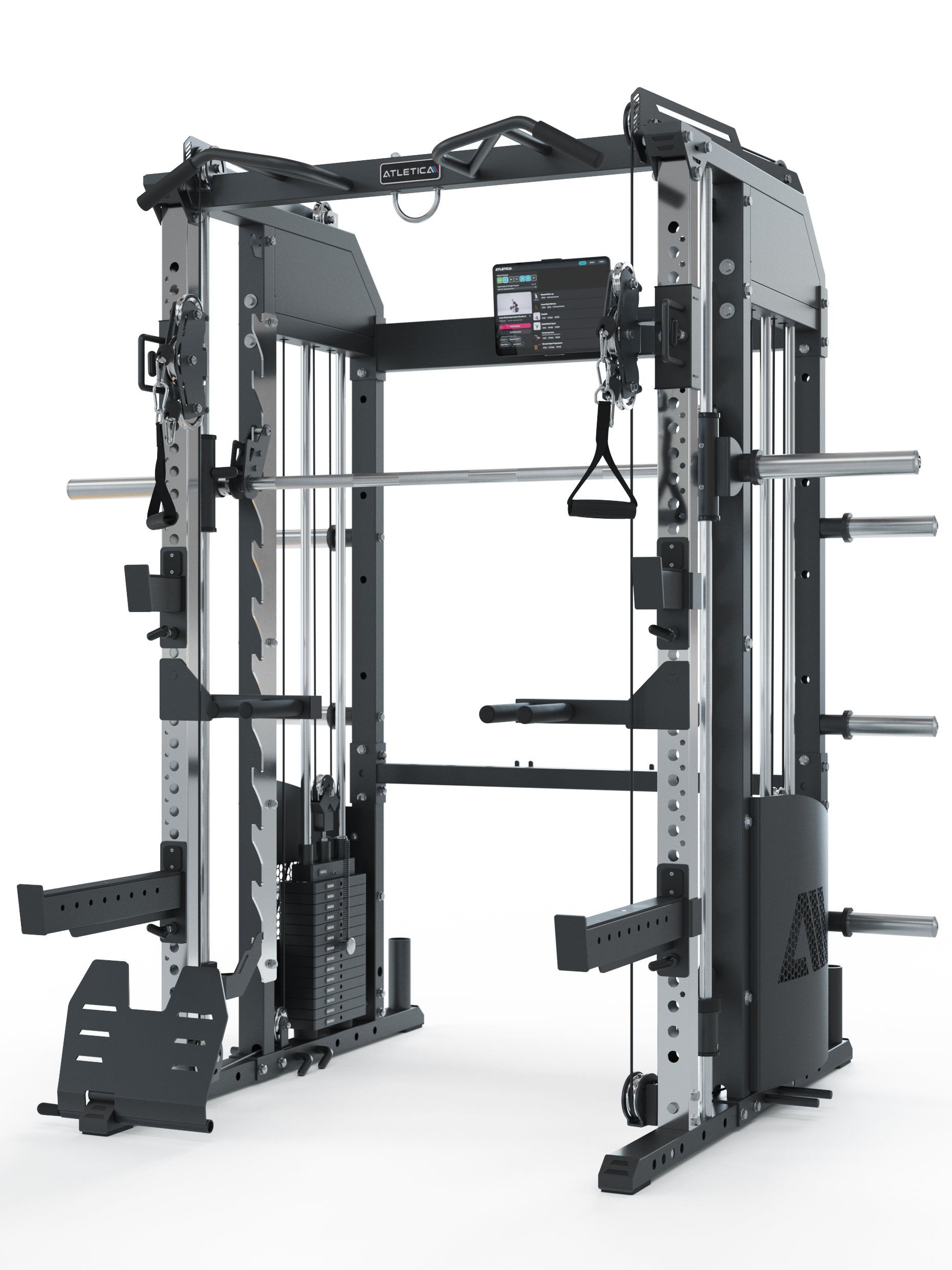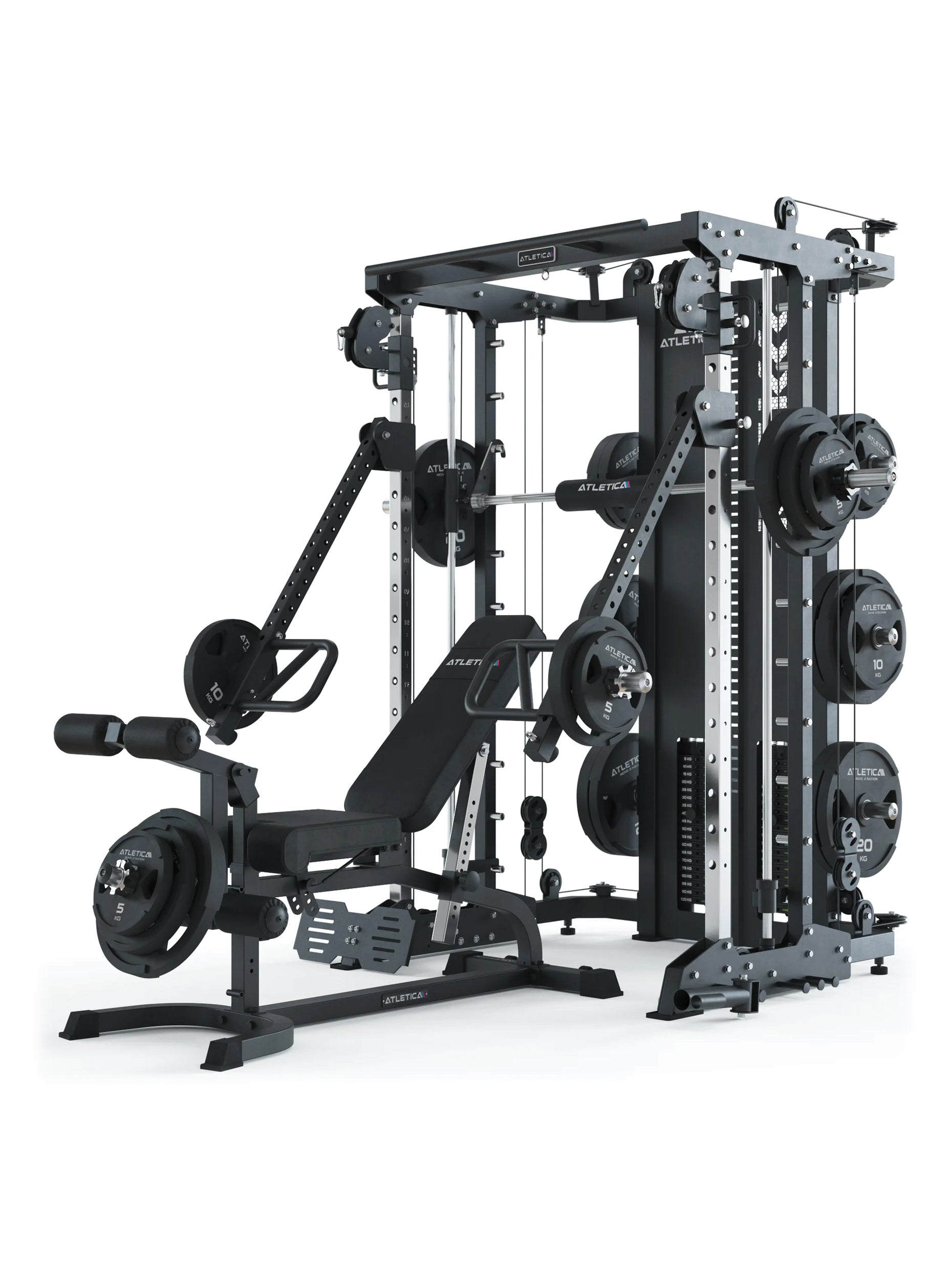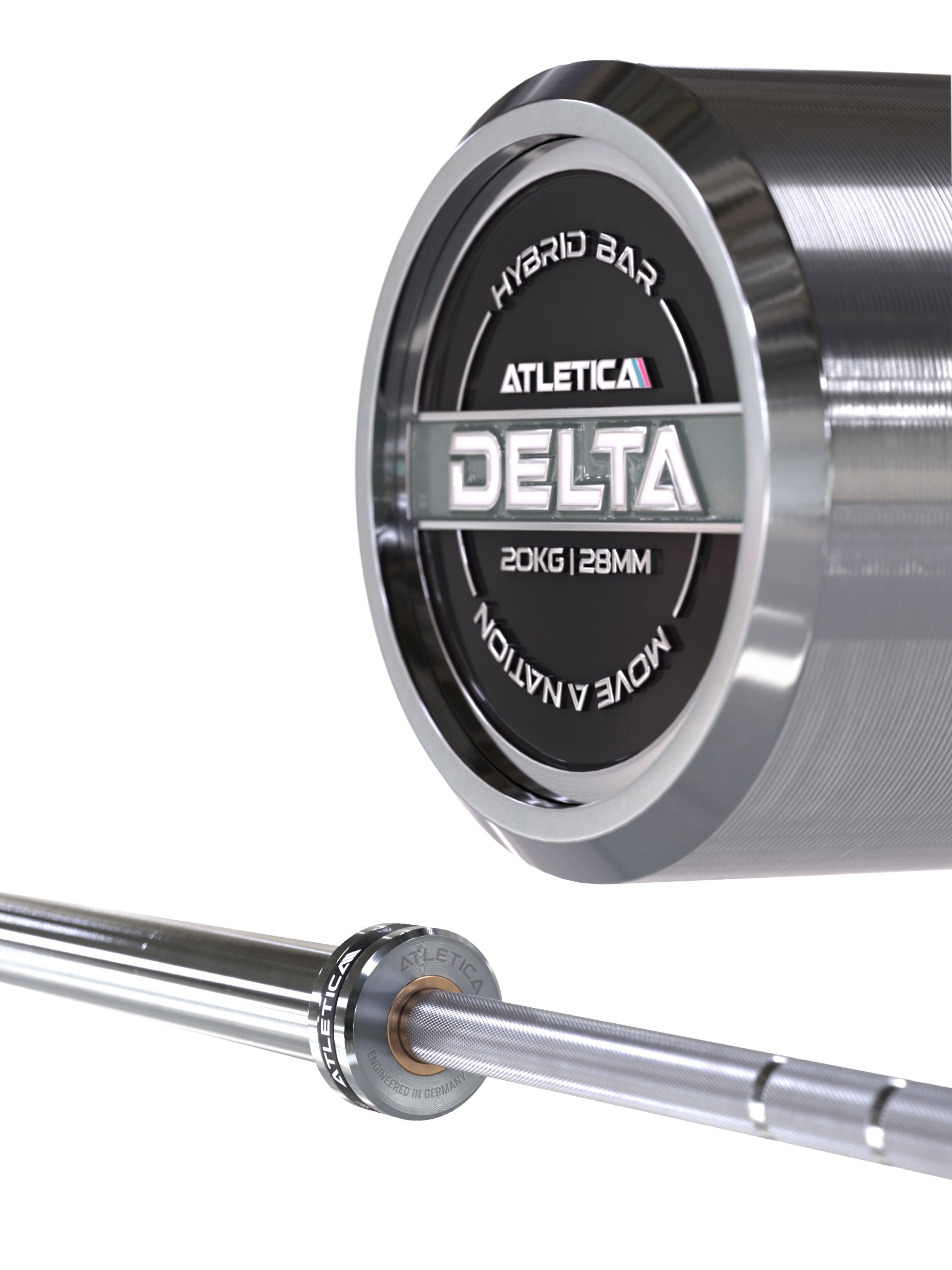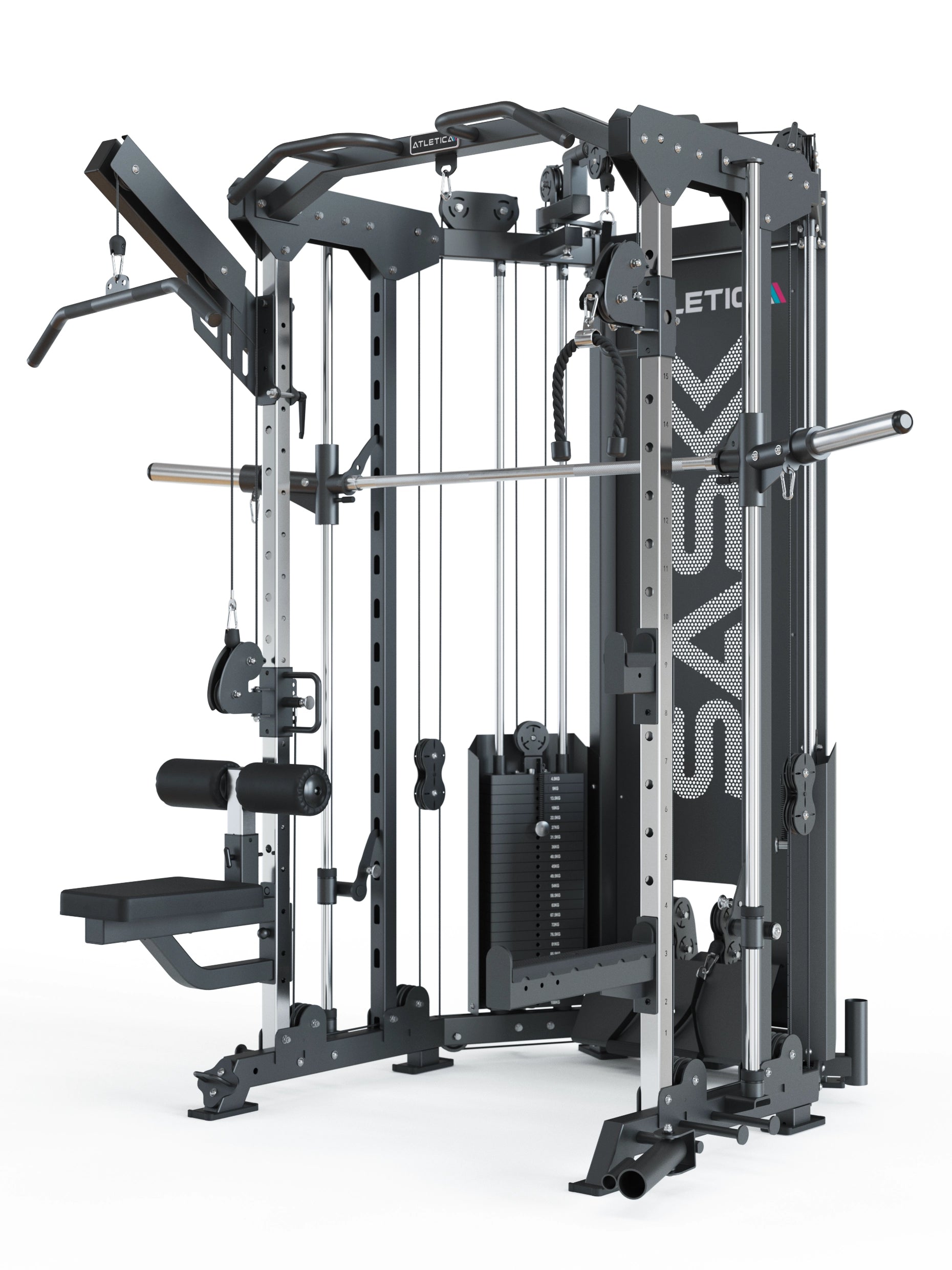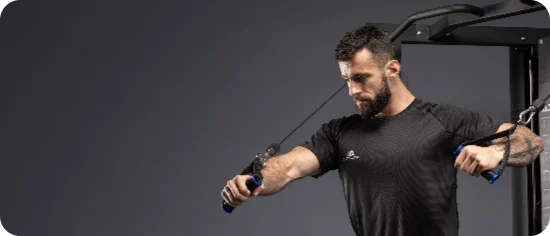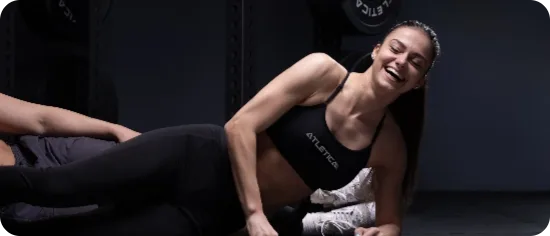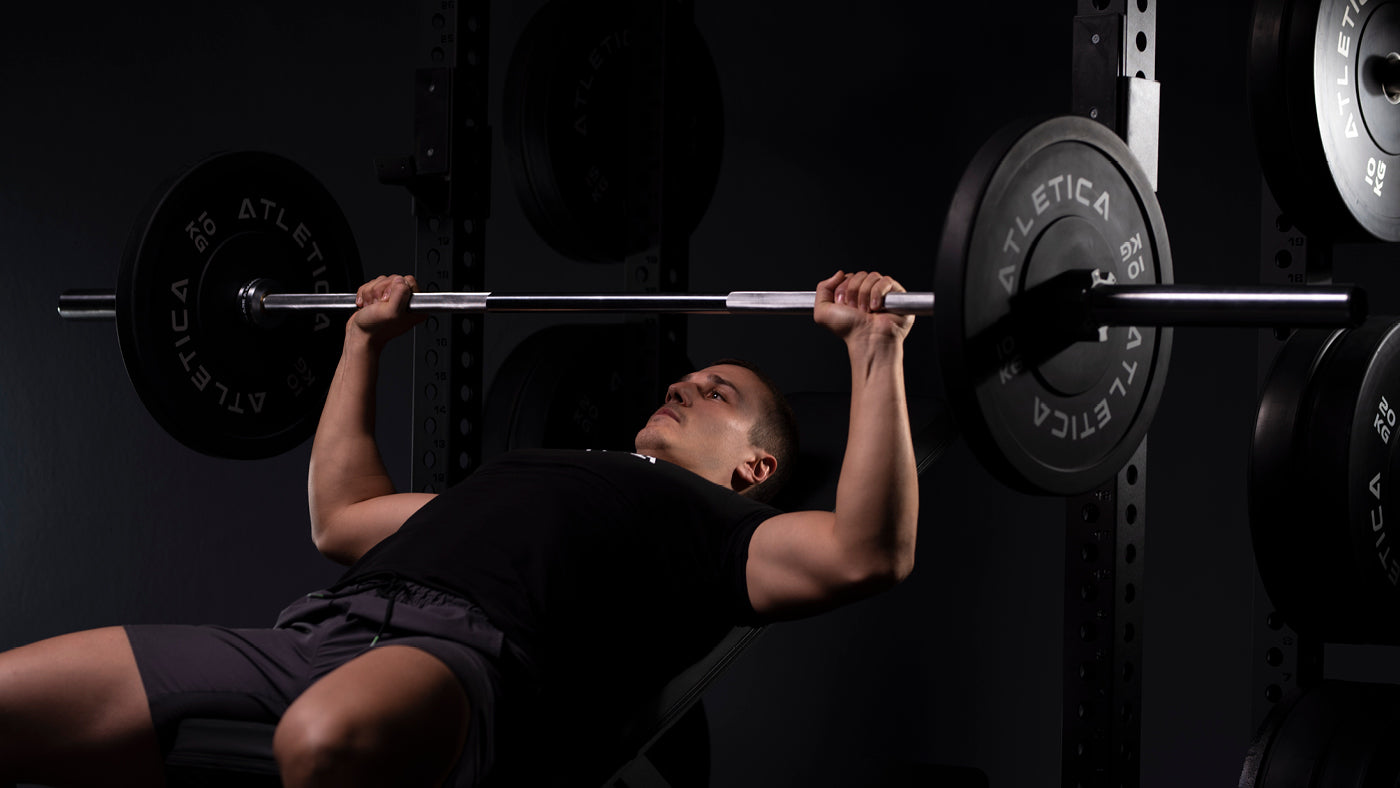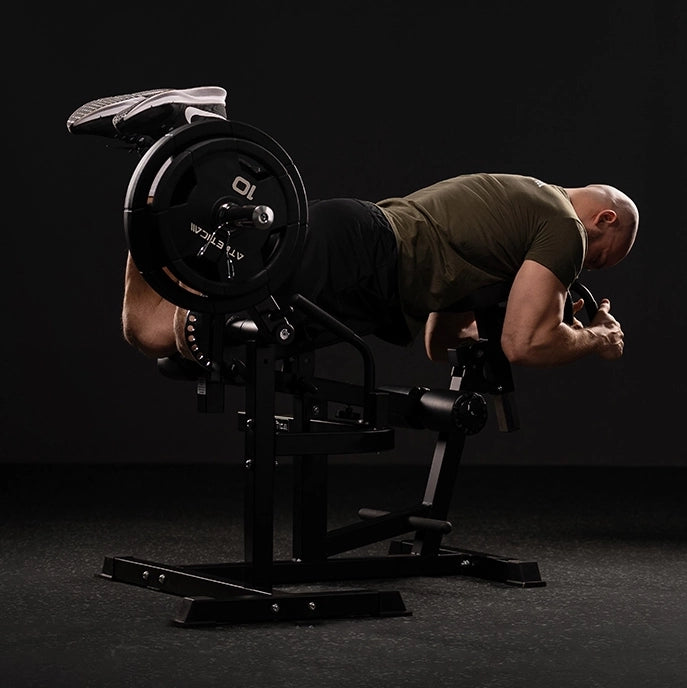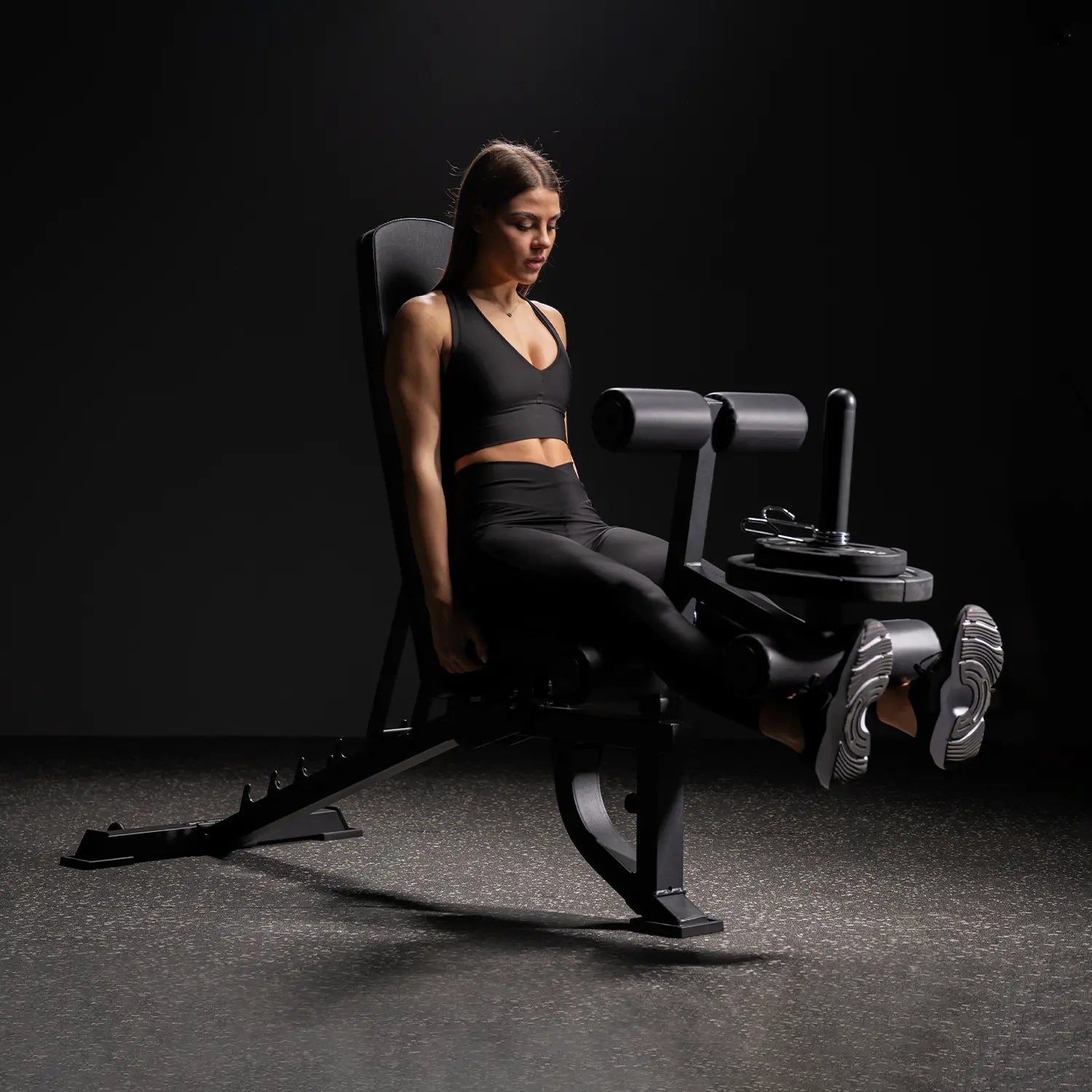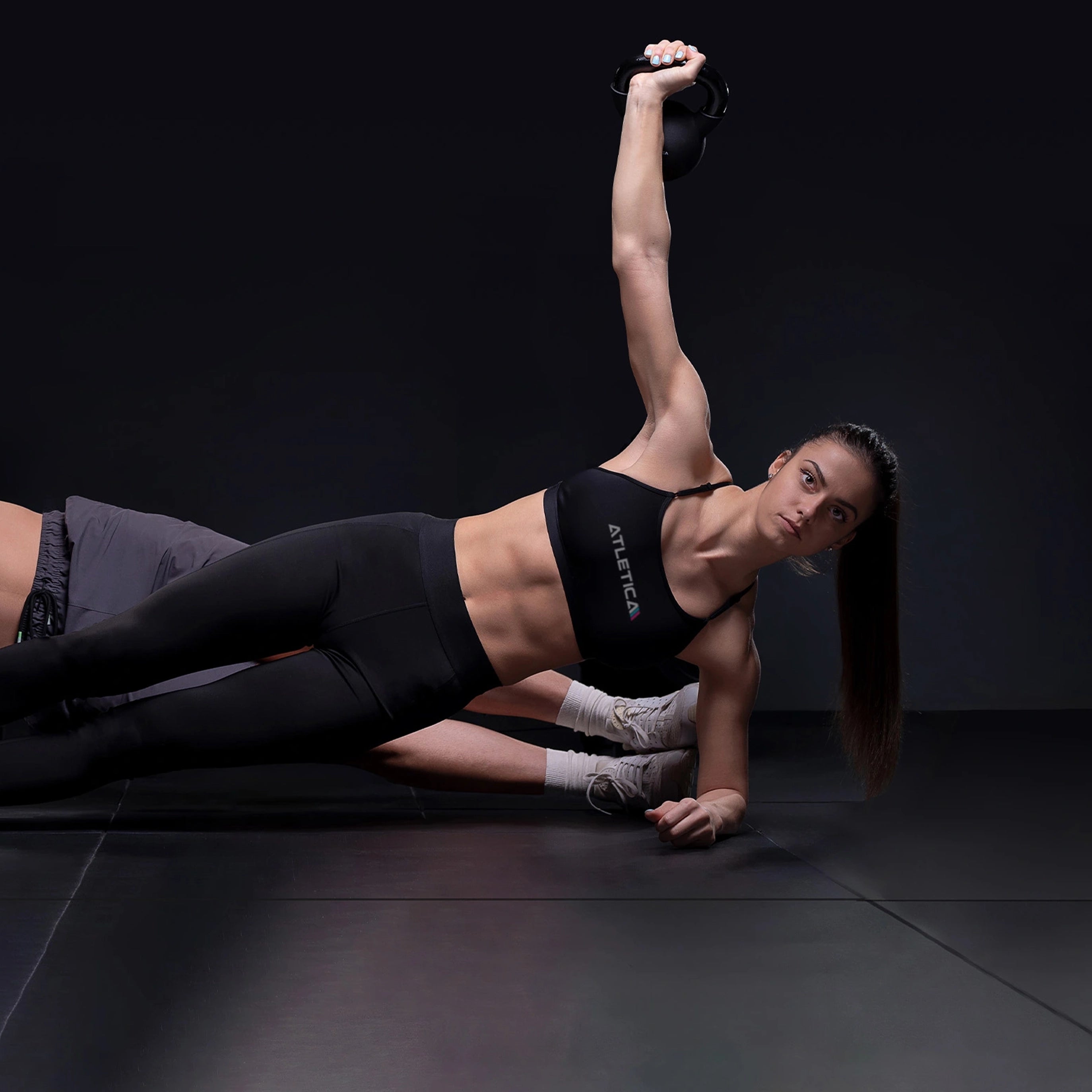You can find a leg curler in pretty much every gym. For whom is this machine or muscle group particularly important? In this article, you will learn more about the back of the legs and how to train them effectively. You will be told which machines are available for the back of the legs and what the advantages and disadvantages of this machine are. You will also learn to what extent you should train the back of your legs and for what purpose. Why are these muscles so important for athletes and how do professionals train their legs? Read the blog post to the end to learn more about these topics.
The hamstrings are not a single muscle, but are made up of the biceps femoris longus, the semitendinosus and the semimembranosus. These muscles have the primary function of flexing the knee and extending the hip. This muscle group is often referred to as the hamstrings. These muscles are part of the "posterior chain", which consists primarily of the muscles of the back of the body.

What is a leg curler?
As the name suggests, the leg curler (or knee flexor) bends the knee. This means that the leg curler is a device in which you have to bend your knee under weight in order to train the back of your leg in isolation. Therefore, the leg curler can be performed standing or sitting.
Advantages and disadvantages of a seated leg curler:
Advantages:
-
A simple and controlled implementation is possible.
-
The knee can be fully extended, allowing you to train at all joint angles.
-
The likelihood of injury is very low.
-
In the rehabilitation area, the seated leg curler is a useful measure.
Disadvantages:
-
The pressure of the pad on the back of the leg makes it difficult to tense the muscles involved.
-
Bending the knee is a very unfunctional movement. The question would be why I should train a movement that hardly ever occurs in everyday life.
Advantages and disadvantages of a standing leg curler (one leg):
Advantages:
-
The back of the left and right legs can be optimally trained. Neither side can take on the power.
-
The standing leg curl is a more functional movement for jogging/sprinting than the sitting one.
Disadvantages:
-
The execution is a little more demanding than when sitting.
- A full range of motion is easier for most exercisers to achieve while sitting.

In addition to the seated knee curl, there are also lying knee curls. You lie on your stomach and curl both legs. In this exercise you will find similar advantages and disadvantages as the seated leg curler. The lying leg curler should be avoided by people with blood pressure or circulatory problems because of its position, as the head is at the same height as your heart. However, when you lie down, the pad does not put pressure on the back of your legs.
Why should you train this muscle and what could training the hamstring muscles look like?
As mentioned above, the hamstring muscles perform knee flexion and hip extension, so it would make sense to train this muscle in both functions. As the front of the leg is often too strong, training the back of the leg is a very effective way to avoid knee pain. Sitting for long periods of time means that the origin and insertion of the hamstring muscles are permanently brought closer together, making it difficult for them to contract during long periods of inactivity. In plain language, this means that it is important to learn to tense and relax the muscles. Your hips also benefit from strong leg flexors. The back of the leg also ensures stable alignment of the hip.
Professional athletes claim to be able to tense the three individual muscles in isolation. The back of the leg is not only of interest to beginners, but also to professional athletes or ambitious gym-goers. These muscles are subjected to enormous forces, particularly during sprints, for example. In order to stay fit, these muscles must be trained under high loads to avoid muscle injuries (e.g. torn muscle fibers).
Here's how to integrate the exercises into your training plan as a beginner, advanced or professional:
Since the back of the leg not only performs knee flexion but also hip extension, hyperextensions and deadlifts are also excellent exercises to train the muscles involved. In the beginning, however, the scope of your training plan is crucial to making effective progress.
Therefore, if you are a beginner, start with the seated leg curl and after four weeks (if possible) switch to the standing or lying leg curl. After 2-3 months, you can include more complex exercises in your training plan, such as deadlifts with straight legs, so that you train hip extension and knee flexion. Therefore, start with "light weight" and do 10-15 repetitions in 2-3 sets. Over time, make the weight heavier and work your way up to 1-5 repetitions.
You may have noticed that your hamstring muscles are tired, especially after a sprint or a long run. Sprints are also great for strengthening the back of your legs. But prepare yourself for this with the exercises listed in the gym.
Sprinters therefore train their hamstrings not only on the track, but also in the gym. Exercises such as heavy deadlifts, Nordic hamstring curls or leg curlers are part of their training plan.
The most effective way is therefore to develop a training plan to strengthen the back of your legs together with an experienced trainer so that you do not feel over- or under-challenged.
This is how you prepare optimally for a competition and your knee/hip stays healthy.

Conclusion:
You can find leg curlers in different designs. All training devices have advantages and disadvantages. You train the back of the leg, which consists of the biceps femoris, the semitendinosus and the semimembranosus. The main function of these muscles is the knee flexion and hip extension. The back of the leg (or hamstring muscles) is responsible for your knee and hip health. You also need strong hamstring muscles to sprint as quickly as possible. A muscle fiber tear in these muscles is a common phenomenon in game sports such as football.
Since you should train hip extension and knee flexion, exercises such as deadlifts and hyperextensions are important in addition to the leg curl. Start with one exercise and gradually increase the training sets, repetitions, training weight and number of exercises.
We at Atletica are happy to support you on your journey to getting fitter. So please contact us to get a little closer to your training goal with the right training equipment.






